- To fix memory-related errors in Excel, you can try changing the Dynamic Data Exchange settings, clearing Excel AppData, or running the program in Safe Mode.
- You can also try running the Office Repair Tool, switching to Manual Calculation, changing larger files to smaller ones, and updating the program.
- If the solutions mentioned here fail to work, consider reinstalling Office, updating Windows, or even upgrading your PC's RAM.
Solution 1: Change Dynamic Data Exchange Settings
The Dynamic Data Exchange (DDE) option in Excel lets other apps update data in your spreadsheets, but they can sometimes cause the program to run out of memory. To prevent that, you can disable it.
- Open Excel and click on 'Options' on the bottom left.
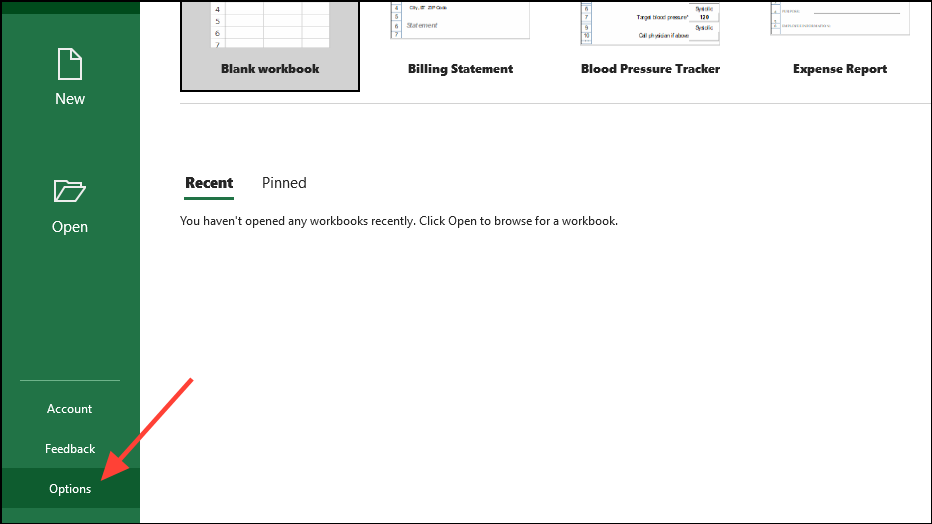
- When the Options window opens, click on the 'Advanced' tab on the left.

- Now, scroll down to the 'General' section, click on the 'Ignore other applications that use Dynamic Data Exchange (DDE)' and uncheck it. Then click on the 'OK' button.
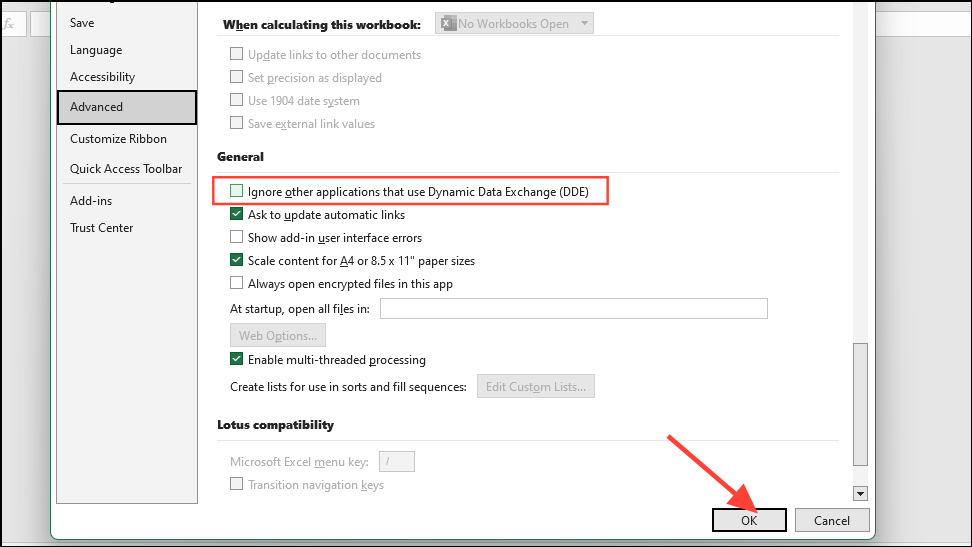
Solution 2: Clear Excel AppData
Sometimes temporary and configuration files can cause Excel to show you the 'not enough memory to complete this action error'. You can try to clear Excel's AppData folder to fix the problem.
- Use the
Win + Rshortcut to open the 'Run' dialog. Then paste the following%appdata%\Microsoft\Excel\within it and click on the 'OK' button.
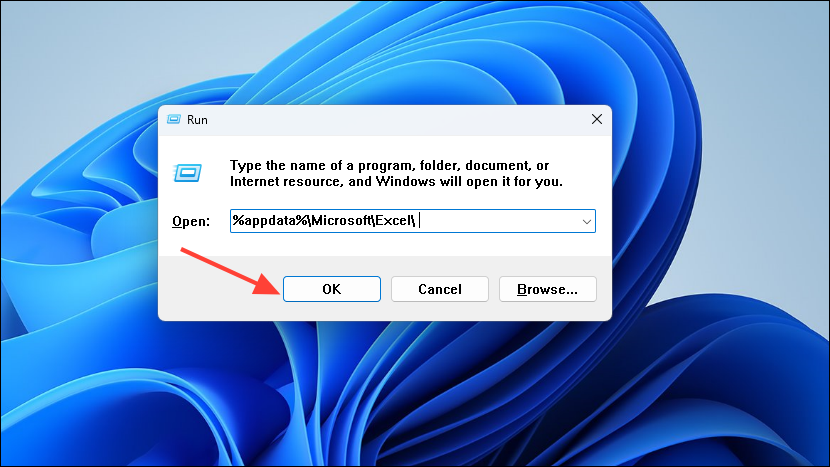
- A new File Explorer window will open up. If it contains any files and folders, select them all and then delete them. You can use the
Ctrl + Ashortcut to select everything at once and delete it so the folder is completely empty.
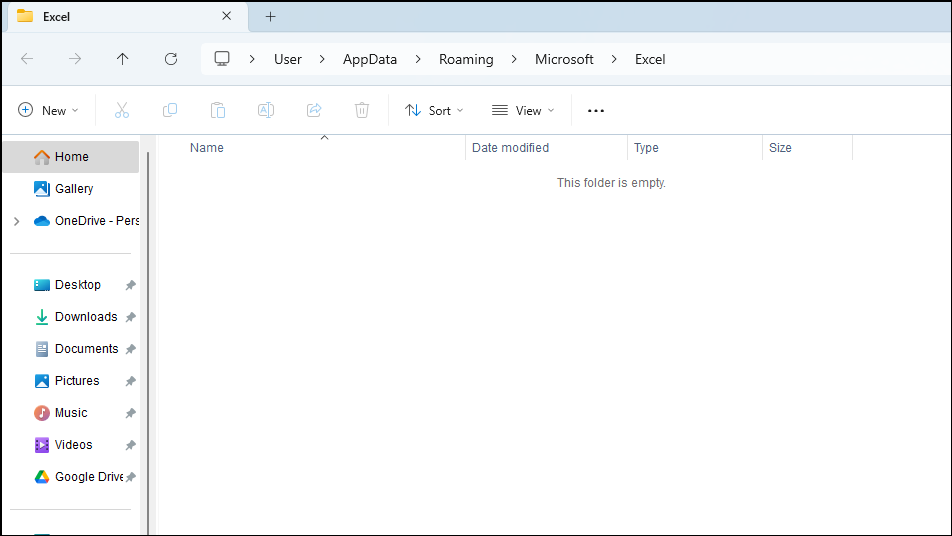
Solution 3: Open Excel in Safe Mode
Add-ins can sometimes malfunction and cause Excel to show you the 'There isn't enough memory to complete this action' error. Try running the program in Safe Mode and see if that is the cause of the problem.
- Use the
Win + Rshortcut to open the Run dialog, typeexcel -safein the box, and press 'Enter' or click on the 'OK' button.

- This will launch Excel in Safe Mode, and you can see 'Safe Mode' at the top. If it doesn't show any errors, you will need to disable your add-ins and then enable them one by one to identify which one is causing the problem.
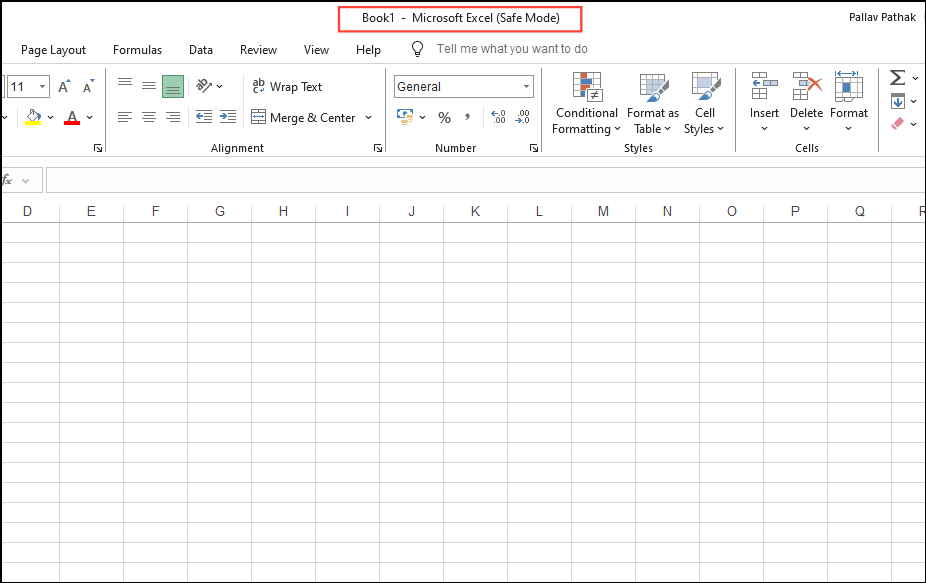
- In Excel, click on the File menu at the top left.
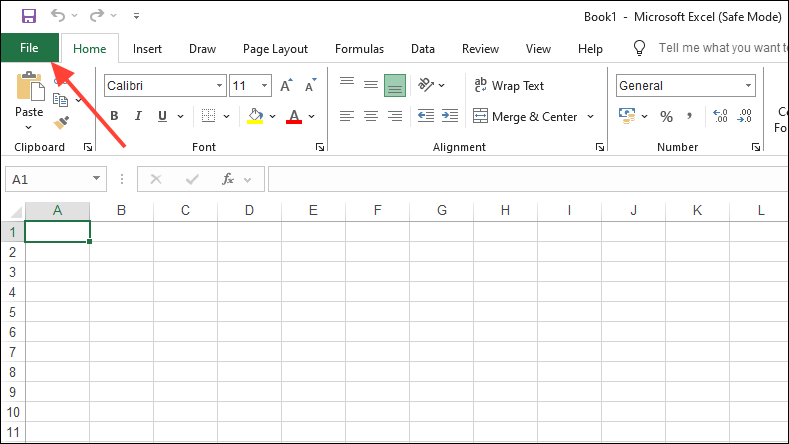
- Then click on 'Options' at the bottom left.

- In the Options window, click on 'Add-ins' on the left.
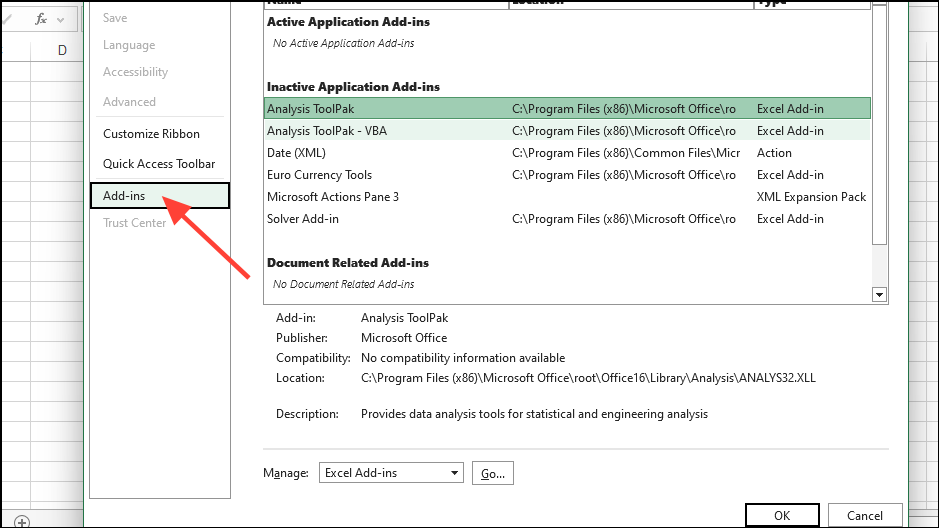
- Click on the 'Manage' dropdown menu at the bottom and then click on COM Add-ins. With COM Add-ins selected, click on the 'Go' button.

- In the box that appears, click on each of the checkboxes to disable them before clicking on the 'OK' button.

- Once you've disabled the Add-ins, close Excel and open it again. Then go to the Add-ins and enable them one by one until you get the error. Once the error appears, you can disable and remove the Add-in causing it.
Solution 4: Run the Office Repair Tool
The Office Repair Tool can help diagnose and fix problems with programs like Office applications.
- Open the Run dialog box with the
Win + Rshortcut, typeappwiz.cpland click on OK.

- This will show you the list of programs installed on your PC. Click on Microsoft Office and then on the 'Change' button at the top.
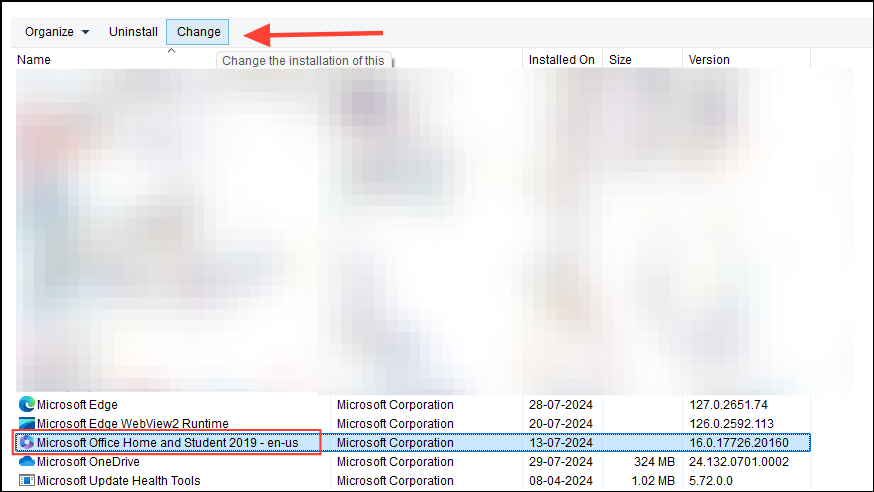
- In the pop-up that appears, click on 'Repair Online' to select it. Then click on the Repair button.
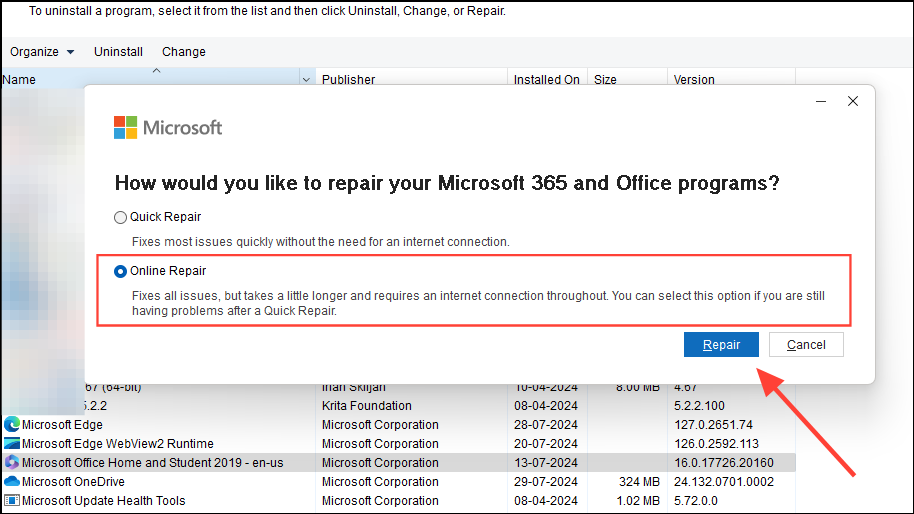
- Once the process is complete, launch Excel again and see if the problem is fixed.
Solution 5: Enable Manual Calculation Mode
If your Excel file includes multiple spreadsheets or has a lot of formulae, switching from automatic to manual calculation may help solve the problem.
- Open the Options dialog box from the File menu in Excel as explained above.
- In the Options dialog box, click on 'Formulas' on the left. Under 'Calculation Options', click on the 'Manual' option for Workbook Calculation. Click on 'OK' and restart Excel for the changes to take effect.

F9 key to use manual calculation after switching to it. Solution 6: Change larger files to smaller ones
You can try shifting some worksheets from larger files into smaller ones to make them easier for Excel to handle.
- Right-click on the worksheet tab you want to move and then click on the 'Move or Copy' option.

- Click on the 'To Book' dropdown menu and then click on 'New Book'. Check that the 'Create a copy' option at the bottom is not enabled and then click on the 'OK' button.
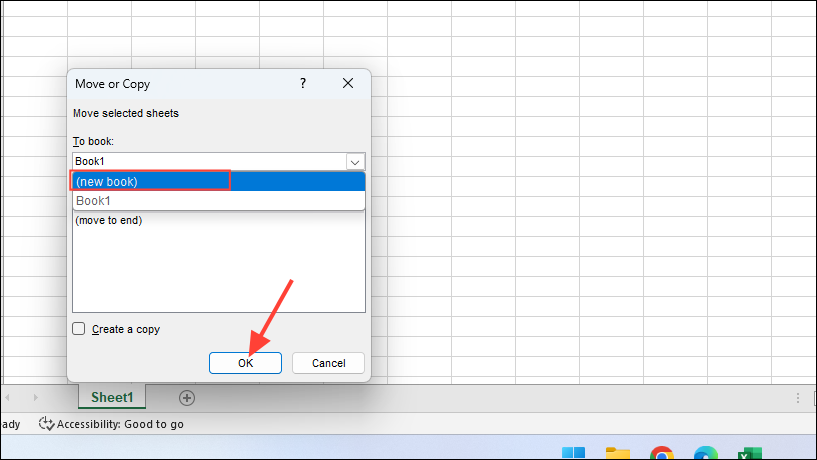
- Save the new workbook with a different name and then repeat the process for other larger files.
Solution 7: Ensure Excel is updated
Updates can fix errors like the 'not enough memory to complete this action', so you should check whether the latest Excel updates are installed.
- Click on the File menu at the top left and then on the 'Account' option on the left.
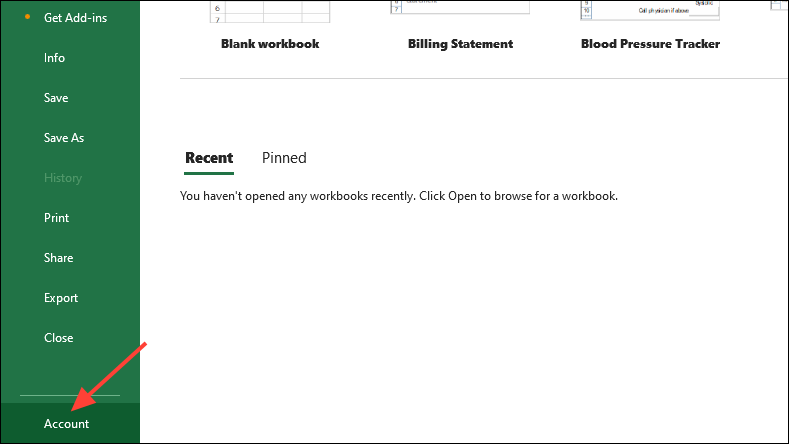
- On the Account page, click on the 'Update Options' button on the right and then on 'Update Now' in the options that appear.
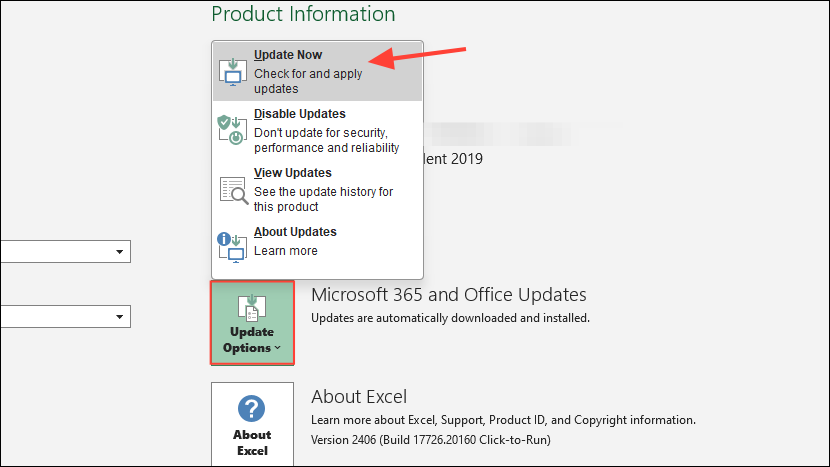
- If updates are available, Excel will install them automatically. Wait until they are installed and then try using it again.
Solution 8: Turn off graphics acceleration
Graphics acceleration requires a lot of memory and can cause problems when running Excel. To turn it off, follow these steps.
- Open the Options dialog in Excel and click on the 'Advanced' tab on the left.
- Then scroll down to the 'Display' section and click on 'Disable Hardware Graphics Acceleration'. Click on the 'OK' button and restart Excel.
Solution 9: Upgrade your RAM
Programs like Excel are increasingly requiring more and more memory. If the above solutions do not help you out, consider upgrading the RAM of your computer.
Things to know
- Besides the above solutions, you can try disabling your antivirus program temporarily and run Excel to check whether the problem still appears. If it doesn't, your antivirus is interfering with its functioning, and you should consider changing it.
- It is also a good idea to close all other programs and applications when running Excel to free up the maximum amount of memory possible for Excel.
- If you use custom views in Excel, try deleting them from the 'View' menu at the top and see if that helps.
- Common fixes like updating Windows and reinstalling Office might be worth a try before you decide to upgrade your PC's RAM.











Member discussion